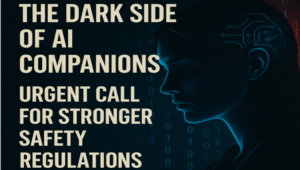Nobody likes using animals in research, not even lab technicians or animal enthusiasts.
Rather, it is carried out to guarantee that medicines and other compounds are safe for potential human use.
Scholars have been looking for alternatives to animals for a long time. Systems utilizing artificial intelligence (AI) are currently speeding up this task.
Using AI to search through all of the global animal testing data that is now available and to avoid the necessity for needless new experiments is one straightforward but very effective use of the technology in this industry.
This is helpful because, according to Joseph Manuppello, a senior research analyst at the US non-profit Physicians Committee of Responsible Medicine, it can be challenging for scientists to sort through decades’ worth of data to discover and analyze precisely what they are looking for.
He expresses excitement about using ChatGPT and other AI models to extract and synthesize all of the available data and make the most of it.
In addition to being the director of the Center for Alternatives to Animal Testing, Thomas Hartung is a toxicology professor at Johns Hopkins University in the United States. According to him, artificial intelligence is just as adept as humans in obtaining data from scholarly publications.
According to Prof. Hartung, one of the main justifications for the existing practice of animal testing is the requirement to evaluate novel substances. There are also a lot of these novel chemicals that need to be examined, as over 1,000 of them hit the market each year.
According to Prof. Hartung, skilled AI systems are starting to be able to assess the toxicity of novel chemicals.”It will be very helpful to have tools available where we can press a button and receive a preliminary assessment that is raising some red flags for us that there may be a problem.
Although software tools have been used in toxicology for a long time, Prof. Hartung says AI is offering an “enormous leap forward” in terms of power and accuracy.
He notes that AI is now incorporated into all phases of toxicity testing and claims that “this is suddenly creating opportunities that were not there before.” Even the initial development of new medications is being done using AI.
Naturally, AI systems aren’t flawless in judging the safety of chemicals. Data bias is a phenomenon that is one issue.
An illustration of this would be if an AI system and its algorithm were developed primarily utilizing health information from a single ethnic group.
There’s a chance that its computations or conclusions won’t be appropriate for individuals from different ethnic backgrounds.
Yet, as Prof. Hartung notes, there are situations in which it is ineffective to test human medications on animals.
For instance, the rheumatoid arthritis medication Vioxx cleared the animal testing phase before moving on and eventually being taken off the market due to research indicating that prolonged human use raised the risk of heart attack and stroke.
However, several commonly used medications, like the painkiller aspirin, which is harmful to rat embryos, would not have passed animal testing.
Prof. Hartung concludes that AI is already outperforming animal testing in many instances.
AnimalGAN is one AI project being developed to try and replace the necessity for animal testing in the future. The US Food and Drug Administration developed software intending to precisely predict the reactions of rats to various chemicals.
Data from 6,442 real rats in 1,317 treatment scenarios were used to train the AI.
An AI-powered virtual dog is being created as part of a related worldwide initiative called Virtual Second Species. It is being trained using information from previous dog test results.
Head of Innovation Cathy Vickers works for the program’s participating organization, the UK’s National Centre for the Replacement, Refinement and Reduction of Animals in Research.
She says that before beginning any human trials, new medications are currently evaluated first on rats and canines to determine their potential toxicity. Obtaining regulatory approval will be the main obstacle for AI testing in the future. It will take time for “full acceptance,” as Dr. Vickers admits.
However, Emma Grange, who oversees research and regulatory issues for Cruelty-Free International, argues that every attempt needs to be taken to guarantee the gradual discontinuation of animal experimentation.
“At this point, rather than just lowering or improving such testing, it is unclear how or if new technologies like AI could contribute to actually ending testing on animals,” she says.















